Smoking St. Louis style ribs typically takes 4-6 hours at 225°F (107°C) to reach the ideal internal temperature of 195-205°F (90-96°C), resulting in tender, flavorful meat that falls off the bone. This comprehensive guide provides step-by-step instructions for preparation, smoking, troubleshooting, and equipment selection to ensure perfect results every time.
Table of Contents
- What Are St. Louis Style Ribs?
- Why Smoke St. Louis Style Ribs?
- Equipment Needed for Smoking
- Preparing the Ribs
- The Smoking Process Step-by-Step
- Troubleshooting & Tips
- Frequently Asked Questions
- Buying Guide for Smokers
- Final Thoughts
What Are St. Louis Style Ribs?
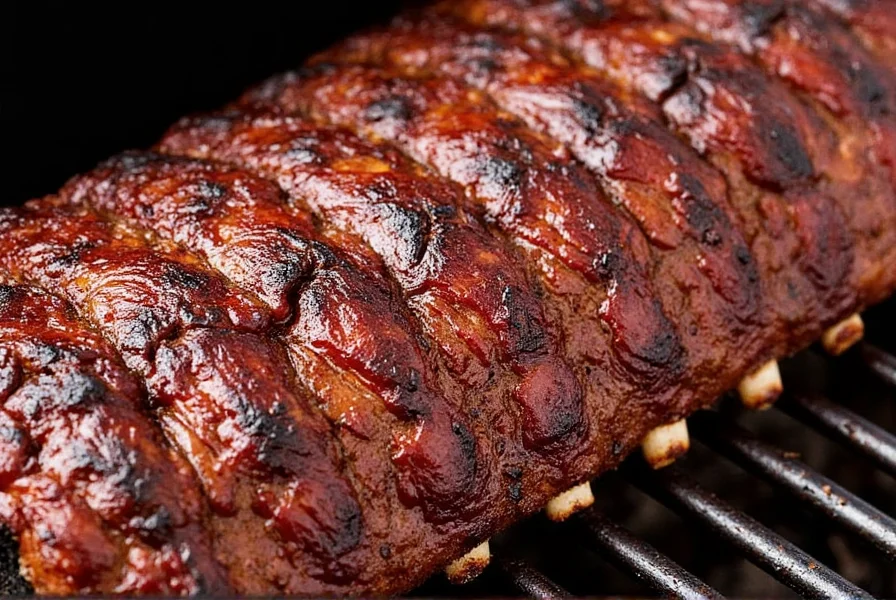
St. Louis style ribs are a specific cut of pork spareribs trimmed into a rectangular shape for even cooking. They come from the belly side of the hog and contain more bone and fat than baby back ribs, resulting in richer flavor when smoked low and slow. According to the Kansas City Barbeque Society, this cut is preferred for its consistent shape and optimal meat-to-bone ratio.
- Bone-in goodness for deep flavor penetration
- Richer flavor profile due to higher fat content
- Perfect for absorbing smoky barbecue sauces evenly
Why Smoke St. Louis Style Ribs?
Smoking is a scientific cooking method that transforms tough meat into tender perfection. The low-and-slow process breaks down collagen into gelatin while preserving moisture, creating a melt-in-your-mouth texture. This technique also allows for deep smoke infusion without drying out the meat.
Benefits of Smoking:
- Deep smoky flavor infusion through controlled smoke exposure
- Tender texture without drying out the meat due to consistent temperature control
- Opportunity to layer spice rubs and wood flavors for complex taste profiles
- Scientifically proven collagen breakdown at 195-205°F (90-96°C) internal temperature
Equipment Needed for Smoking
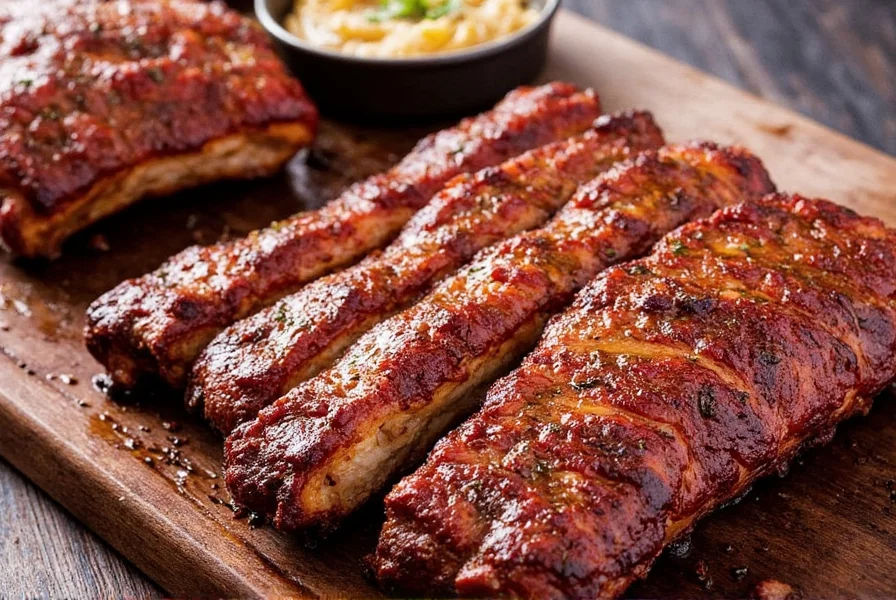
Your gear matters when it comes to perfecting St. Louis style ribs. Here's what you need:
| Equipment | Purpose | Recommended Models |
|---|---|---|
| Smoker | Cooking and flavor infusion | Weber Smokey Mountain, Masterbuilt Electric, Bradley Offset |
| Wood Chips/Chunks | Flavor contribution | Hickory, Apple, Cherry |
| Thermometer | Monitor internal rib temp | Maverick ET-732, ThermoPro TP03 |
| BBQ Gloves | Heat protection | Kevlar-lined gloves |
| Brushes & Tongs | Applying sauce and flipping | Silicone basting brush, stainless steel tongs |
Preparing the Ribs

Preparation is key. Here's how to prep like a pro:
- Remove the membrane from the bone side — it keeps smoke and flavor out if left on. Slide a butter knife under the membrane at one end, lift it, then use a paper towel to grip and pull it off in one piece for maximum flavor penetration.
- Trim excess fat but leave 1/8 inch to render and keep things juicy during smoking.
- Apply your dry rub generously and let sit overnight in the fridge for deeper flavor penetration. Use a mix of brown sugar, paprika, garlic powder, and black pepper for balanced sweetness and spice.
The Smoking Process Step-by-Step
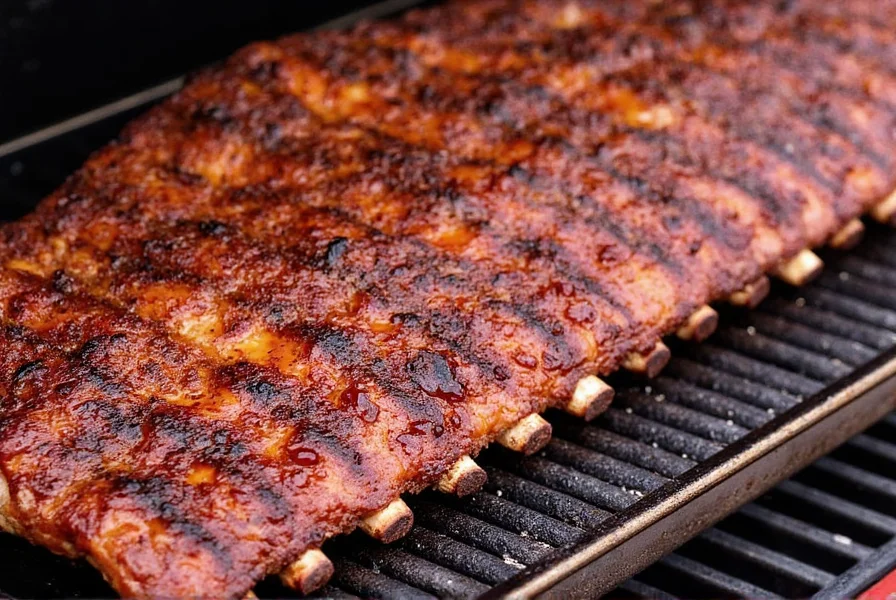
Now comes the real magic. Here's how to smoke St. Louis style ribs to perfection:
1. Set Up Your Smoker
Target temperature: 225°F (107°C). Use indirect heat and maintain consistent airflow. Place a water pan in the smoker to regulate humidity and prevent drying out.
2. Place Ribs Bone Side Down
This ensures even cooking and protects the meaty side from direct heat exposure. Position ribs on the top rack for optimal smoke circulation.
3. Add Wood Chips or Chunks
Hickory adds boldness, apple gives sweetness, and cherry offers a mild fruity note. For best results, use a mix of hickory and apple wood for balanced flavor. Soak wood chips for 30 minutes before adding to prevent flare-ups.
4. Monitor Internal Temperature
The sweet spot is 195–205°F (90–96°C). At this range, collagen turns to gelatin, and the meat becomes tender. Use a probe thermometer inserted between bones for accurate readings.
5. Wrap or Go Naked?
- Wrap in foil after 3 hours for faster cook and moister results (the "Texas Crutch" method).
- Unwrapped gives more bark development but takes longer (4-6 hours total).
6. Sauce or Not to Sauce?
Apply BBQ sauce in the last 30 minutes to avoid burning. For purists, serve sauce on the side to preserve the natural bark. Use a thin, vinegar-based sauce for authentic St. Louis style.
Troubleshooting & Tips
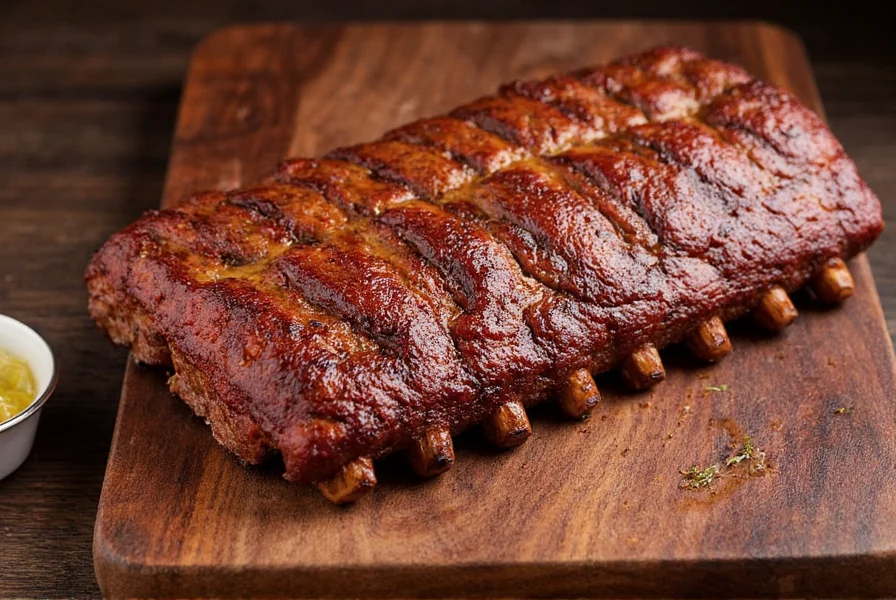
Even the best plans can go sideways. Here's how to handle common hiccups:
| Problem | Possible Cause | Solution |
|---|---|---|
| Ribs too dry | Overcooked or not enough fat | Use a water pan or wrap in foil earlier; maintain 225°F temperature |
| No smoke ring | Lack of nitric oxide/smoke exposure | Ensure steady smoke during first hour; use fresh wood chips |
| Too smoky/bitter taste | Draft issues or bad airflow | Adjust vents, use cleaner-burning woods like apple or cherry |
| Inconsistent temps | Poor insulation or weather interference | Check seals, move to sheltered area, or use a smoker blanket |
| Ribs not falling off bone | Undercooked or temp too high | Extend cook time or lower smoker temp to 225°F; check internal temperature |
Frequently Asked Questions
How long does it take to smoke St. Louis style ribs?
Typically, St. Louis style ribs take 4-6 hours at 225°F. The exact time depends on your smoker, ambient temperature, and the specific rack of ribs. Always cook to internal temperature (195-205°F) rather than time alone. For best results, use a probe thermometer to monitor tenderness.
What's the ideal temperature for smoking St. Louis ribs?
The ideal smoking temperature is 225°F (107°C). This low-and-slow approach allows connective tissues to break down properly without drying out the meat. Avoid temperatures above 250°F as they can lead to tough, dry ribs. Consistent temperature control is critical for perfect results.
Should I wrap St. Louis style ribs during smoking?
Wrapping (the "Texas Crutch") after 3 hours of smoking is recommended for most home cooks. Use foil or butcher paper to help push through the stall, retain moisture, and speed up cooking. For maximum bark development, you can skip wrapping but expect longer cooking times (up to 7 hours).
What's the difference between St. Louis style ribs and baby back ribs?
St. Louis style ribs are trimmed spareribs with a rectangular shape, more bone, and higher fat content than baby backs. They come from the belly side of the hog. Baby backs are smaller, more curved, leaner, and come from around the loin. St. Louis ribs offer richer flavor due to more marbling and are better for smoking due to their consistent shape.
Can I smoke St. Louis ribs in an electric smoker?
Absolutely. Electric smokers work well for St. Louis ribs as they maintain consistent temperatures. Use wood chips in the designated tray and follow standard smoking procedures. Many beginners find electric smokers easier to manage than charcoal options, though they produce less intense smoke flavor.
How do I know when St. Louis ribs are done?
Ribs are done when they reach 195-205°F internally. Other indicators include: the meat pulling back from the bones (about 1/4 inch), flexible bones that bend easily, and a probe sliding in with little resistance. The "bend test" (lifting ribs with tongs to see if they crack) is also reliable. Never rely solely on time — always check temperature.
What's the best wood for smoking St. Louis ribs?
Hickory provides bold, classic barbecue flavor, while apple offers sweet, mild notes perfect for balancing richness. Cherry adds fruity undertones without overpowering. For authentic St. Louis style, use a mix of hickory and apple wood. Avoid mesquite as it can become bitter at low temperatures.
How do I remove the membrane from ribs?
Slide a butter knife under the membrane at one end of the rib rack, lift it, then use a paper towel to grip and pull it off in one piece. This step is crucial because the membrane blocks smoke and seasoning penetration. Leaving it on results in tough, flavorless ribs.
Buying Guide for Smokers

Choosing the right smoker sets the stage for great ribs. Here's a breakdown of popular options based on your skill level and needs:
1. Weber Smokey Mountain
- Features: Vertical design, excellent heat control, easy to clean
- Pros: Reliable, durable, ideal for beginners and pros alike; consistent temperature maintenance
- Cons: No digital display; requires attention to vents
- Best For: Enthusiasts who enjoy hands-on control and authentic smoke flavor
- Price Range: $300–$500
2. Masterbuilt Electric Smoker
- Features: Digital thermostat, electric heating element, no charcoal required
- Pros: Very user-friendly, minimal effort needed; perfect for apartment dwellers
- Cons: Limited smoke flavor compared to charcoal models; less authentic experience
- Best For: Beginners and those with limited outdoor space
- Price Range: $250–$400
3. Bradley Offset Smoker
- Features: Dual-chamber design, automated smoke generation (Bradley bisquettes)
- Pros: Consistent smoke output, minimal monitoring; ideal for long smoking sessions
- Cons: Higher cost; learning curve for traditionalists; requires electricity
- Best For: Home chefs who want automation and convenience for large batches
- Price Range: $700–$1000+
4. Camp Chef Smoke Vault
- Features: Gas-powered, built-in thermometer, large capacity
- Pros: Fast setup, reliable temp control, great for big batches; easy to clean
- Cons: Requires propane and not as 'authentic' as charcoal smokers
- Best For: Weekend warriors hosting backyard events and family gatherings
- Price Range: $400–$600
Which Smoker Should You Choose?
- Beginner: Masterbuilt Electric — simplest operation with digital controls
- Hands-on Lover: Weber Smokey Mountain — best for mastering traditional smoking techniques
- Affordable Performance: Camp Chef Smoke Vault — great value for consistent results
- Automation Junkie: Bradley Offset — ideal for set-and-forget smoking sessions
Final Thoughts
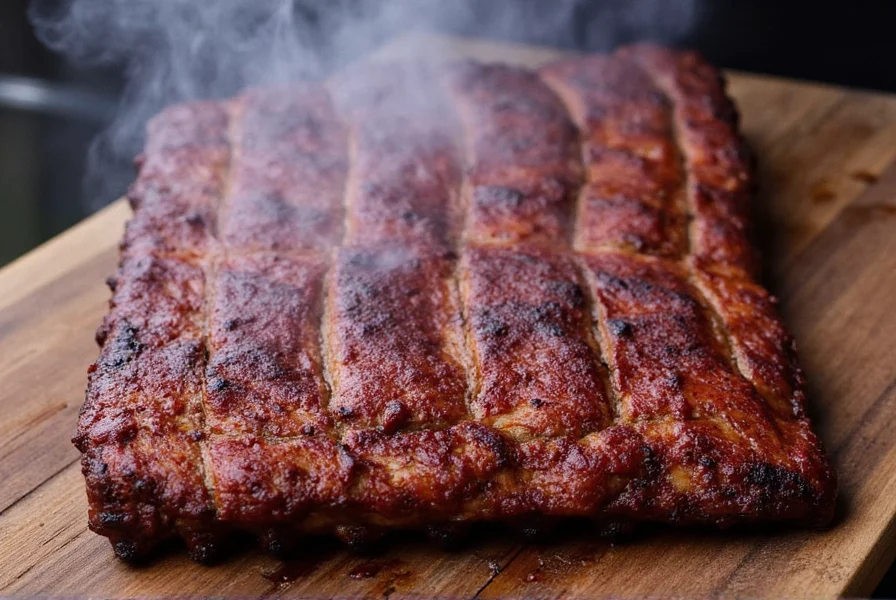
Whether you're new to smoking or a seasoned pitmaster, St. Louis style ribs offer an unbeatable blend of flavor and satisfaction. With the right prep, equipment, and patience, you'll be serving up competition-level ribs in your own backyard. Remember: consistent temperature control and proper internal temperature monitoring are the keys to perfect ribs every time.
So grab your favorite smoker, fire up the chips, and get ready to impress. Because once you've tasted ribs done right, there's no going back.
Stay smoky, friends.











 浙公网安备
33010002000092号
浙公网安备
33010002000092号 浙B2-20120091-4
浙B2-20120091-4